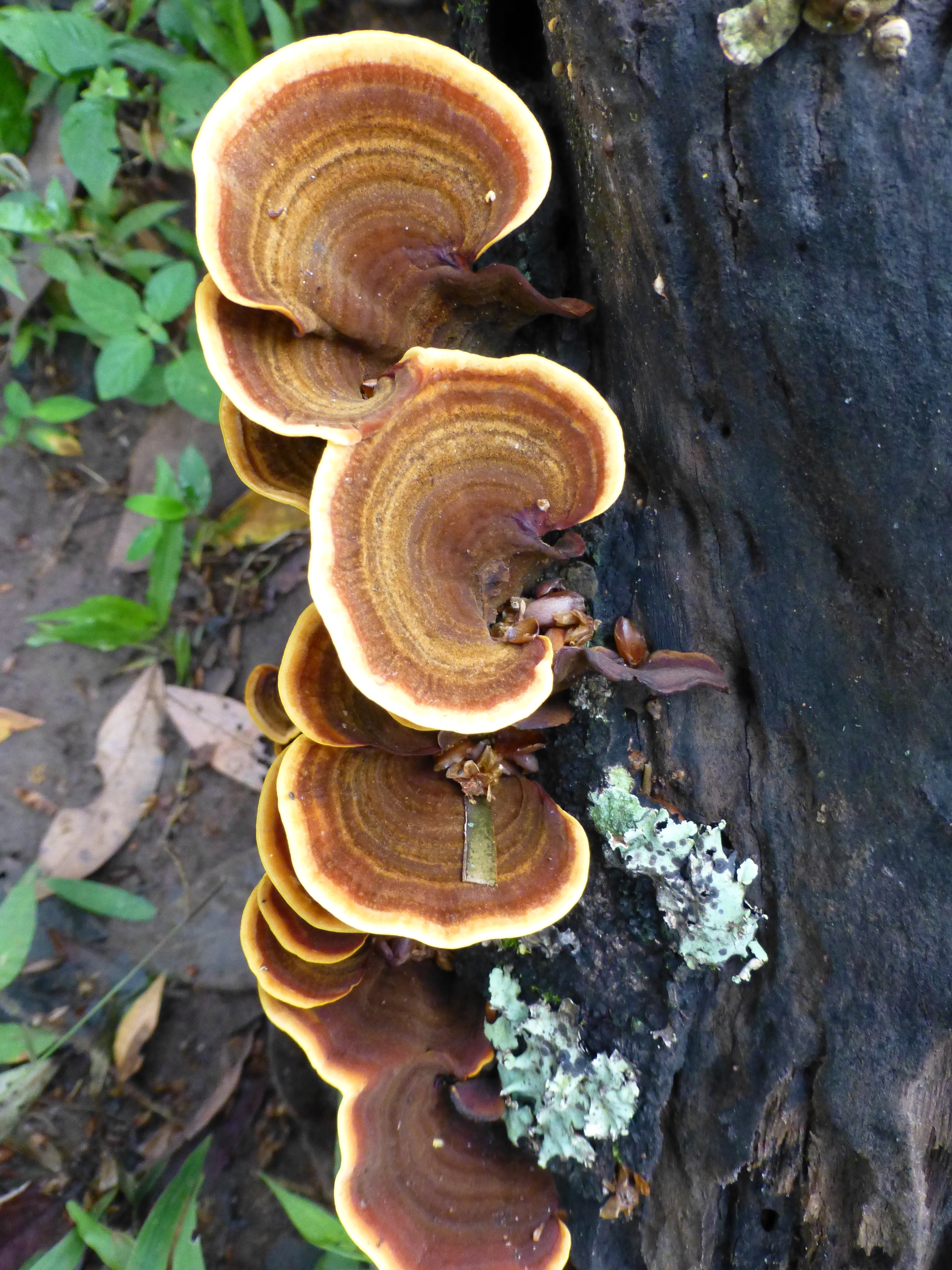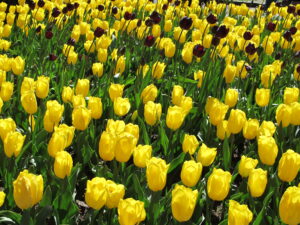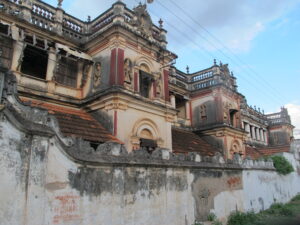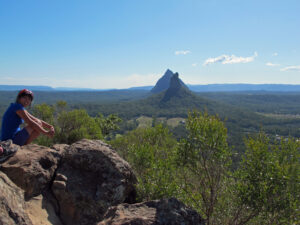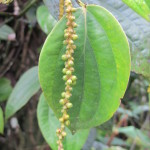
The Thekkady hills that form the eastern border of Kerala state enjoy a fertile landscape of plentiful rain, rich soil and moderate temperatures. As a result, you can find here a fascinating mix of domesticated fields and wild reserves.
The extensive gardens and farmed fields here are planted thick with tea and coffee bushes along with cacao and a wide range of spices such as nutmeg, ginger, cinnamon, allspice, turmeric, black pepper and more. The most widespread of these is cardamom, whose small seeds grow on tendrils near the ground from a spiky leafy plant, are picked by hand nine times a year, and end up dried and crushed in much Indian cuisine.
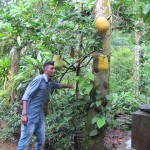
We toured one spice garden, Abraham’s, though our host was more like Moses guiding us through a thick tangle of spice and fruit plants. And we stayed at a family home on the meticulously cultivated spice plantation of a farmer.
Then there is the wild side here. The 300 square kilometer Periyar National Park is a reserve, home to elephant, goar, wild boar, water buffalo, deer, mongoose, etc. – 62 mammal species in all – with plenty of resident birds as well.
They call it a tiger reserve, which is true, but visitors hardly ever see a tiger. During the monsoon season of summer and fall, you can’t see much of any other mammal either. With water plentiful everywhere, the animals scatter, evaporating into the quiet reaches of the park.
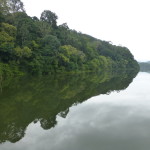
That makes the morning tourist boat ride somewhat less than exciting. The misty and still morning found the lake like a mirror, very atmospheric against the dark green hills. Most of the people on the boat were Indian tourists who reacted as expected to the tedium and beauty of the natural world: the three stages of expectancy, photo ops and then restlessness at nothing mammalian to see, Of course, that’s a whole lot better than what happened one day in 2009 when dozens of tourists drowned as one of these boats overturned from top-heavy loading. We took the 90 minutes of our boat ride to look at birds on stumps and along the shoreline, with the help of the surprisingly knowledgeable on-board work force.
So we didn’t expect to see big animals on the two walks through the forest that we booked, guided due to potential dangers and the unmarked paths.

The first was a night walk, three hours starting at 10pm, under a nearly full moon and plenty of break in the clouds. We were interested in this because we have had such great experience of them in the past – frogs, snakes and night birds in Costa Rica; Kiwi in NZ; Coral snakes, insects and spiders of all sorts in Belize.
Here, instead, we traipsed through a sandalwood grove, whose trees are often poached because the oil is quite valuable (about $1500 per kg) and guarded through the night by wandering forest rangers. Then we slogged through the mushy terrain some more. Only three nocturnal birds showed up: a nightjar whipped past overhead in the moonlight, a diminutive owlet swooped by, and an unidentifiable ball of white slept in a tree. The small animals were plentiful: spiders, beetles, ant colonies…and leeches.
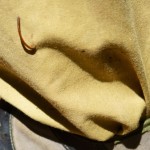
Two to three centimeters long, and only thick as a wire, these squiggly worms emerge from the ground during the rainy season, hanging about on leaves and waiting for a juicier item to pass by. They don’t just bite like mosquitoes, but chomp down and suck the blood till they’re full, using some anti-coagulant to keep the blood dripping out for at least half an hour after they’re finished. On the plus side, at least, they don’t carry diseases like malaria. And oddly, unlike Thailand, the locals don’t seem to have found a plant leaf that causes coagulation at once.
As protection from them or worse, we were given tightly woven leggings reaching up to our knees. But the leeches move surprisingly fast, like inch-worms move, once they go for a ride on your feet; and they do drop from the trees too. So we kept flicking them off our shoes and wherever else they ended up. Our guides grabbed them instead (easy since the leeches latch onto fingers really well), then squeezed the life out of them (hard since the leeches compress into squiggles the consistency of rubber bands to protect themselves).
One of us had a leech settle between the shoulder blades before it disappeared, presumably engorged already, leaving a dripping bite-hole and red-stained shirt behind.
And then at the end of the walk we had to scrutinize our shoes and clothing to get rid of the few others that were still hanging on, waiting to do damage later. Our fumbling around to sanitize ourselves and our belongings made our driver laugh, and eventually we felt comfortable enough to see the humor ourselves.
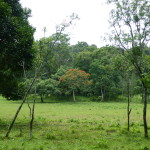
Now, what to do about the mid-day walk we had already paid a goodly amount of rupees to do? We wanted the exercise and expected to see some good birds during the walk, plus the weather seemed good. But did we really want to wrangle with leeches again? With “not much chance of a refund, since it’s the government,” as our host said, we went ahead with the walk.
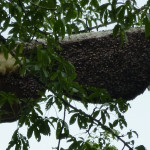
Happily, the five mile walk was all we expected it to be. We saw more than twenty-five types of birds, including ten new to us in India. We learned about interesting trees and plants in this eco-system, saw huge wild bee hives and tree-top nests for termite ants. We saw tracks of elephant, porcupine, deer and gaur, plus the holes made by land crabs. We avoided rain until the last ten minutes, though that soaked us. And there were plenty of leeches.
As we trekked in the daylight, we could and did a lot more checking of our clothes, often finding some new leech prowling on our leggings, pants and shirts. When we stopped, we could look down on the ground and see several standing up on leaves, preparing to pounce. By the finish, as we cleaned and checked again, we ended up with three bleeders, and a bit more stained clothing.
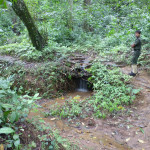
But, strange as it might seem, during the walk we just got accustomed to dealing with leeches – not quite equanimous, but treating them more like a minor annoyance.
Only later did we see the warning in the Rough Guide to India, that leeches in the wet season make trekking impossible. Oh, yes, we might have stayed within the domestic charms of the spice gardens of Thekkady, where there are no leeches. But we took on the challenge of the wild – and bled to tell the tale.
(Also, for more pictures from India, CLICK HERE to view the slideshow at the end of the India itinerary page.)


